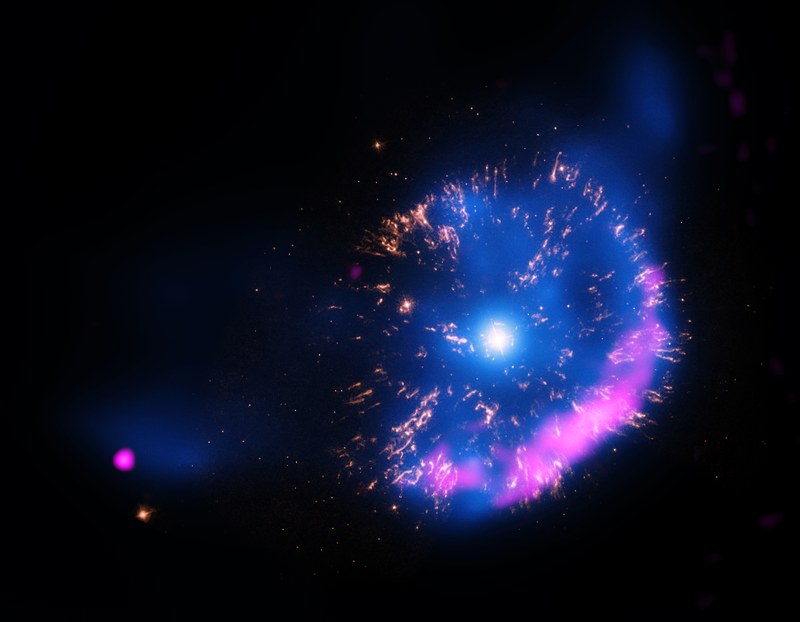Measuring an excited state of 23Mg helps to understand stellar explosions
Physics professor Jordi José participates in an international project in which, the measurement of an unstable state of 23Mg, lasting only 10^(-14) seconds, has allowed the possible detection of gamma rays from stellar explosions to be precisely quantified
The novae are thermonuclear explosions of stellar origin. They occur on the surface of white dwarf stars, revitalized at the end of their evolution through the transfer of matter from a companion, in binary star systems. It is the second most frequent type of stellar thermonuclear explosion in our Galaxy, after X-ray eruptive sources (or X-ray bursts). In fact, in the Milky Way alone, about 40 - 50 nova explosions occur each year.
During a nova explosion, the white dwarf star undergoes a remarkable increase in brightness (luminosity), reaching 10000 - 100000 times that of the Sun, and is accompanied by the ejection, at thousands of kilometers per second, of 10-7 - 10-4 solar masses of material strongly processed by nuclear reactions. The combined use of different techniques, such as spectroscopic determinations of chemical abundances in the ejected material, photometric studies of the light curve, as well as hydrodynamic simulations of the explosion, have contributed to understanding and characterizing these explosions. In fact, it is thought that novae are mainly responsible for the synthesis of some isotopes of carbon, nitrogen and oxygen (13C, 15N and 17O) found in the Universe. An as yet unconfirmed prediction, however, proposes that during these explosions, certain radioactive nuclei are generated, such as sodium-22 (22Na), the decay which gives rise to gamma rays of 1,275 MeV, potentially detectable. Unfortunately, the expected production of 22Na in novae strongly depends on the rate of the nuclear reaction 22Na + proton --> 23Mg + gamma, which presents a large uncertainty, due to the unknown properties of the energy state 7785.0(7) keV of 23Mg. In fact, the amount of 22Na ejected in a nova is proportional to the duration (half-life) of this state, t, in the form, t0.7.
To date, there have been strong discrepancies regarding the duration of this state, with proposed values between 1 and 12 fs (ie, between 10-15 and 1.2x10-14 s). The measurement of nuclear processes of such short duration constitutes a real challenge. A new study, published this week in Nature Communications, in which 62 researchers from 35 scientific institutions have collaborated, with the notable participation of UPC physics professor Jordi José, presents the results of a new study that combines new techniques of analysis of correlations between particles and measurements of speed differences to determine the duration of this state, obtaining a new value of 11 fs.
The experiments have been carried out with the AGATA, VAMOS++ and SPIDER detectors at the GANIL ion accelerator (Caen, France). These experiments significantly reduce the uncertainty associated with the production of 22Na in novae. Instruments such as the future COSI space telescope should be able to detect 22Na in nova explosions up to 13,000 light-years away. The simulations presented in this study have been carried out using the MESA and SHIVA codes (the latter developed entirely at the UPC).
Reference:
Fougères, C., de Oliveira Santos, F., José, J. et al. Search for 22Na in novae supported by a novel method for measuring femtosecond nuclear lifetimes. Nat Commun 14, 4536 (2023)

Share: